Things You'll Need
Knife or grater
Cutting board
Heatproof, microwaveable bowl
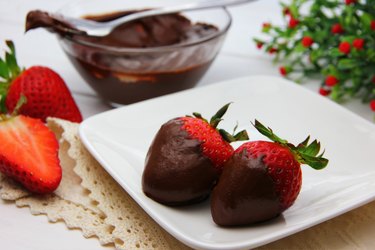
Dipping or "enrobing" your homemade candies or baked goods in chocolate gives them a finished, professional appearance, but it does require a bit of practice. A further complication is that some chocolates are too viscous to make a thin shell, increasing the likelihood of your handiwork looking lumpy and unkempt. Commercial "dipping wafers," the easy-melting chocolate intended for just that purpose, are sorely lacking in flavor. It's better to start with a good-quality chocolate, then thin it as needed for your coating.
Cocoa Butter Method
Step 1
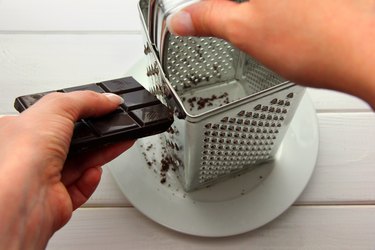
Chop or coarsely grate your chocolate, so it will melt more quickly and evenly. Transfer the chocolate to a heatproof mixing bowl.
Video of the Day
Step 2

Grate 2 to 4 tablespoons of pure, solid cocoa butter. Use a very fine grater, so the cocoa butter is light and fluffy.
Step 3

Place the bowl of chocolate in or over a pot of hot water. The water should be barely hot, ideally no more than 130 to 140 degrees Fahrenheit. Stir continuously once the chocolate begins to melt, to ensure that its temperature remains as even as possible throughout.
Step 4
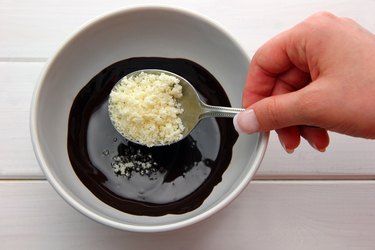
Remove the bowl of chocolate from its water bath once only a few small lumps are visible. Stir until they've disappeared, then add your cocoa butter approximately one tablespoon at a time.
Step 5
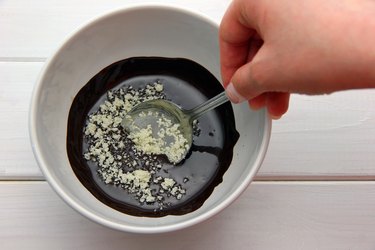
Continue stirring and adding cocoa butter until the chocolate reaches a suitable consistency. If you find it begins to re-thicken as you work, that simply means it's beginning to cool and set. Return the bowl to its water bath for a few moments, stirring the chocolate to equalize its temperature, then go back to your task.
Alternative Fats and Oils Method
Video of the Day
Step 1
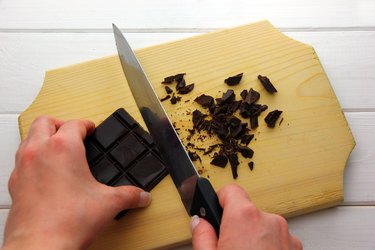
Grate or chop your chocolate into coarse pieces of roughly consistent size. Place them in a heatproof bowl.
Step 2
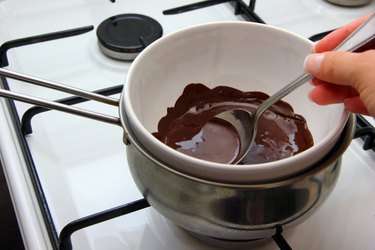
Warm the chocolate gently over hot water, stirring continuously once it begins to melt. Alternatively, microwave it at half-power in 20-second increments, stirring after every stint in the microwave, until it's almost fully melted.
Step 3
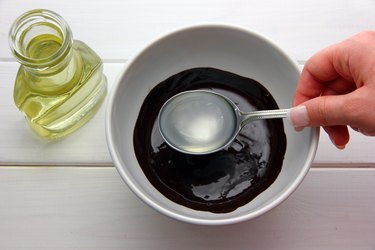
Remove the bowl of chocolate from its water bath or microwave. Pour in up to a tablespoon of a neutral-flavored oil -- such as canola oil -- in a very thin stream, stirring continuously. Alternatively, for a richer finished product, add a similar quantity of softened butter and stir it in until it melts.
Step 4

Continue stirring and adding oil or butter until the chocolate reaches your desired consistency. You might need to re-warm the bowl of chocolate occasionally, especially if you're using butter.
Ganache Method
Step 1
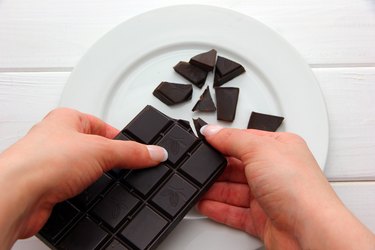
Weigh your chocolate on a kitchen scale, then break, chop or grate it into smaller pieces. If you have no scale, start with a known quantity of chocolate such as a 1-pound block or perhaps 3 or 4 of your favorite 3.5-ounce gourmet chocolate bars. Place the chocolate in a heatproof bowl.
Step 2

Pour 1 part heavy cream into a microwaveable measuring cup, for every 3 parts of chocolate. If you don't have a scale, the old saw that "a pint is a pound" is a close approximation. If you're using a pound of chocolate, you'll need 1/3 of a pint of heavy cream, or 2/3 cup.
Step 3
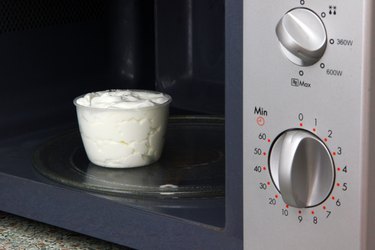
Heat the cream in your microwave until it's at the verge of boiling, 1 to 2 minutes depending on the power of your microwave.
Step 4
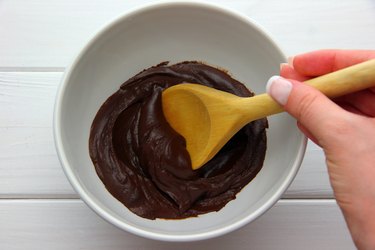
Pour the hot cream over your coarse pieces of chocolate. Stir with a wooden spoon or silicon spatula until the chocolate has entirely melted and the liquid is smooth. It will look messy and lumpy at the beginning, but this is normal. Just keep on stirring, and it will inevitably come together.
Step 5

Dip your sweets or fruit in the thinned ganache, or pour it as a shiny, smooth glaze over cakes, cookies or candies.
Tip
If you begin with chocolate in pellet form -- called "callets" or "pistoles," depending on their shape -- you won't need to chop it before beginning. Couverture chocolate in callet form is available from online outlets as well as many craft, bulk and baking-supply retailers. The same outlets usually carry cocoa butter.
Cocoa butter is chocolate's own natural fat, and good-quality "couverture" chocolate contains 31 to 34 percent cocoa butter. Adding more not only makes the chocolate thinner, it helps "temper" the chocolate so it sets to a perfectly crisp shell with a glossy sheen.
Oil is liquid at room temperature, so add it sparingly. Your chocolate won't set if you use too much, though it will still be wonderful for dipping fruit or drizzling over your desserts. Butter -- or coconut oil, if its faint flavor is appropriate -- is solid at cool room temperatures, and is better in chocolate that will be used as a dipped coating.